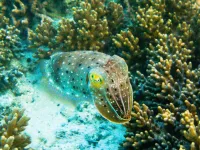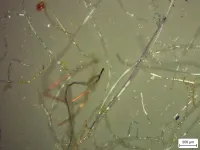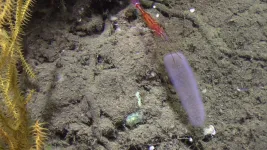Using personalized medicine to avoid resistance to leukemia treatment
2021-05-04
(Press-News.org) T-cell acute lymphoblastic leukemia (T-ALL) is a very aggressive type of blood cancer. It is relatively rare but still draws a lot of attention as it mostly develops in children under the age of 20. The standard treatment for T-ALL involves heavy chemotherapy procedures, which result in favorable outcomes with an overall survival of 75% after 5 years.
However, some patients do not respond to this treatment, or they only respond for a short period, after which the disease grows back. These patients therefore need alternative therapies.
Researchers from the Faculty of Health and Medical Sciences, University of Copenhagen, have now identified a combination treatment, which could potentially benefit patients that do not respond to standard chemotherapy.
'Our study suggests that we could use personalized medicine to target the cancer cells in the subgroup of T-ALL patients that do not initially respond to or stop responding to the standard chemotherapy. By combining two specific protein inhibitors, we have shown that we can obtain a strong and durable effect on leukemia cell growth. This might improve the overall survival of T-ALL patients', says Giulia Franciosa, Assistant Professor at the Novo Nordisk Foundation Center for Protein Research.
Targeting two proteins to avoid resistance
The majority of T-ALL patients have mutations in the so-called Notch1 gene. This mutation causes a cell surface receptor to induce cancer cell growth. By using a drug that inhibits this receptor, it is possible to stop the cancer cells from dividing and growing. Unfortunately, the cancer cells are good at adapting and in many cases develop resistance towards the Notch-inhibitor.
'The challenge we are facing with drug resistance is very hard to overcome as long as we are only targeting one protein, in this case the Notch1 receptor, at a time. That is why we have been looking for a therapy option that targets two proteins at the same time, making it much more difficult for the cancer cells to develop resistance. And we found one', says Giulia Franciosa.
Mass spectrometry proteomics gives unbiased answers
By comparing cells that are sensitive to Notch-inhibition with cells that are resistant - either from the beginning or develop resistance over time - the researchers identified a specific signaling protein responsible for the drug resistance: Kinase C. By targeting both proteins at the same time, they were able to eliminate the resistance.
'We used high-resolution mass spectrometry based proteomics to study the underlying molecular mechanisms that cause the resistance. The proteomics technology allows us to analyze the entire set of proteins, the proteome, present in a cell at the same time. By using this technique, we can map out differences and similarities between the responsive and non-responsive cells in an unbiased way. And that is how we found that Protein Kinase C activity is upregulated in resistant cells', says Jesper Velgaard Olsen, Professor at the Novo Nordisk Foundation Center for Protein Research.
The researchers hope that their findings in time can be used in the treatment of T-ALL patients who do not tolerate or respond to standard chemotherapy.
INFORMATION:
ELSE PRESS RELEASES FROM THIS DATE:
2021-05-04
University of Bristol research into octopus vision has led to a quick and easy test that helps optometrists identify people who are at greater risk of macular degeneration, the leading cause of incurable sight loss.
The basis for this breakthrough was published in the latest issue of the Journal of Experimental Biology and describes new technology developed by lead researcher, Professor Shelby Temple, to measure how well octopus- which are colour-blind - could detect polarized light, an aspect of light that humans can't readily see. Using this novel technology, the research team showed that octopus have the most sensitive polarization vision system of any animal tested to date. Subsequent research ...
2021-05-04
When COVID-19 patients began filling up ICUs throughout the country in 2020, health care providers faced difficult decisions. Health care workers had to decide which patients were most likely to recover with care and which were not so resources could be prioritized.
But a new paper from the University of Georgia suggests that unconscious biases in the health care system may have influenced how individuals with intellectual disabilities were categorized in emergency triage protocols.
The state-level protocols, while crucial for prioritizing care during disasters, frequently ...
2021-05-04
(Boston)--If you come from a family where people routinely live well into old age, you will likely have better cognitive function (the ability to clearly think, learn and remember) than peers from families where people die younger. Researchers affiliated with the Long Life Family Study (LLFS) recently broadened that finding in a paper published in END ...
2021-05-04
Brain implants are used to treat neurological dysfunction, and their use for enhancing cognitive abilities is a promising field of research. Implants can be used to monitor brain activity or stimulate parts of the brain using electrical pulses. In epilepsy, for example, brain implants can determine where in the brain seizures are happening.
Over time, implants trigger a foreign body response, creating inflammation and scar tissue around the implant that reduces their effectiveness.
The problem is that traditional implants are much more rigid than brain tissue, which has a softness comparable to pudding. Stress between the implant and ...
2021-05-04
A new auroral phenomenon discovered by Finnish researchers a year ago is probably caused by areas of increased oxygen atom density occurring in an atmospheric wave channel. The speculative explanation offered by the researchers gained support from a new study.
Observations made by University of Helsinki researchers increased the validity of a speculative mechanism according to which a type of aurora borealis named 'dunes' is born. In the new study, photographs of the phenomenon taken by an international group of hobbyists in Finland, Norway and Scotland were compared to concurrent satellite data.
The rare type of aurora borealis was seen in the sky on 20 January 2016 and recorded in photos taken by ...
2021-05-04
This overlay shows radio (orange) and infrared images of a giant molecular cloud called W49A, where new stars are being formed. A team of astronomers led by Chris DePree of Agnes Scott College used the National Science Foundation's Karl G. Jansky Very Large Array (VLA) to make new, high-resolution radio images of this cluster of still-forming, massive stars. W49A, 36,000 light-years from Earth, has been studied for many decades, and the new radio images revealed some tantalizing changes that have occurred since an earlier set of VLA observations in 1994 and 1995.
The ...
2021-05-04
Scientists have developed a new "key-hole surgery" technique to extract metals from the earth - which could revolutionise the future of metal mining
A team of international researchers, including Dr Rich Crane from the Camborne School of Mines, University of Exeter, have developed a new method to extract metals, such as copper, from their parent ore body.
The research team have provided a proof of concept for the application of an electric field to control the movement of an acid within a low permeability copper-bearing ore deposit to selectively dissolve and recover the metal in situ.
This is in contrast to the conventional approach for the mining of such deposits ...
2021-05-04
Swansea University scientists have uncovered potentially dangerous chemical pollutants that are released from disposable face masks when submerged in water.
The research reveals high levels of pollutants, including lead, antimony, and copper, within the silicon-based and plastic fibres of common disposable face masks.
The work is supported by the Institute for Innovative Materials, Processing and Numerical Technologies (IMPACT) and the SPECIFIC Innovation & Knowledge Centre
Project lead Dr Sarper Sarp of Swansea University College of Engineering said:
"All of us need to keep wearing masks as they are essential in ending the pandemic. But we also urgently need more research and regulation on mask production, so we can reduce any risks to the environment and ...
2021-05-04
Pyrosomes, named after the Greek words for 'fire bodies' due their bright bioluminescence, are pelagic tunicates that spend their entire lives swimming in the open ocean. They are made up of many smaller animals, known as zooids, that sit together in a tubular matrix, known as tunic (hence the name pelagic tunicates). Because they live in the open ocean, they generally go unnoticed. In spite of this, increasing research points to their importance in marine environments, as they can form dense blooms that impact food web dynamics and contribute to the movement and transformation of organic carbon.
The study conducted with GEOMAR research vessel POSEIDON in 2018 and 2019 in the vicinity of the Cabo Verde Islands, of which the results have now been published ...
2021-05-04
Scientists at the Walter Reed Army Institute for Research demonstrated that biomarkers associated with traumatic brain injury were elevated among law enforcement and military personnel, particularly in active duty participants with longer duration of service. Most notably, these elevated biomarker levels were observed in individuals without a diagnosed brain injury or concussion.
Some law enforcement and military personnel are regularly exposed to low levels of blast, particularly during training, due to the use of explosive charges and high caliber weapons. Understanding effects from these occupational exposures is a military health care priority to improve ...
LAST 30 PRESS RELEASES:
[Press-News.org] Using personalized medicine to avoid resistance to leukemia treatment




